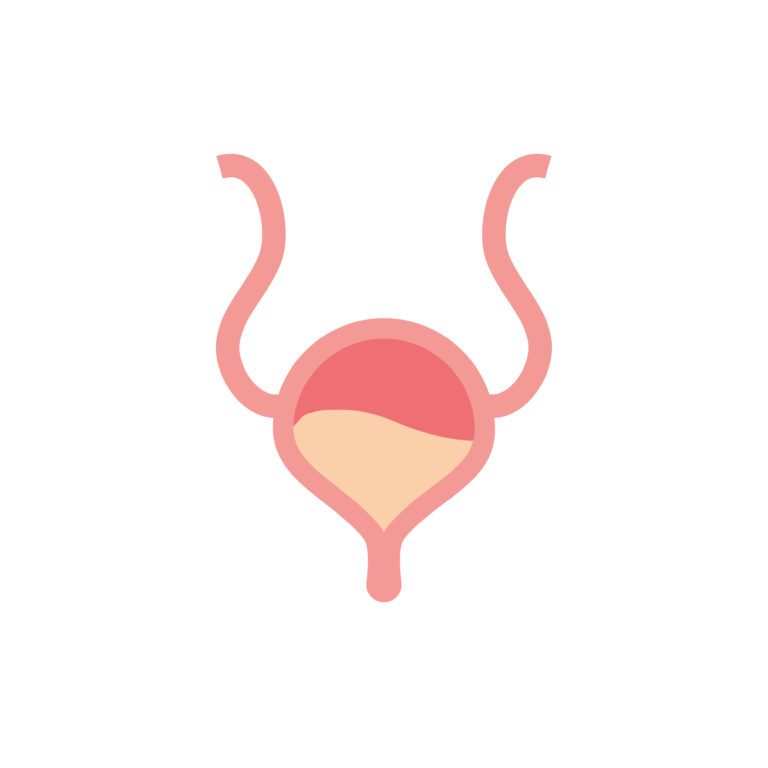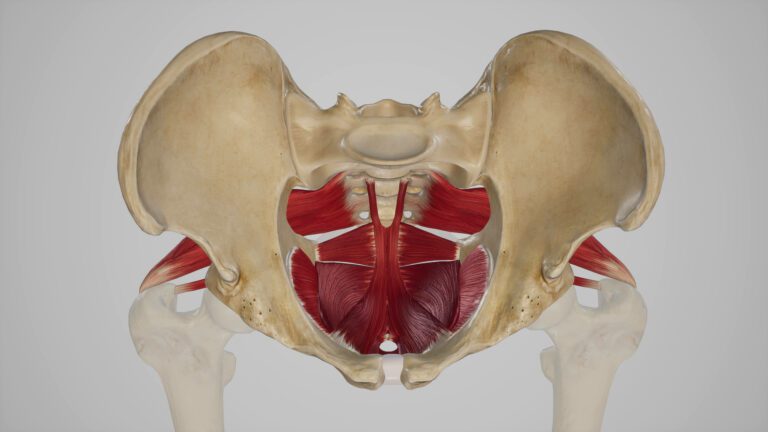Pelvic Floor Dysfunction Symptoms Women Often Face & What to Do About Them
Leaking pee when laughing, sneezing, or jumping
Back pain that doesn’t go away no matter how many times you do a yoga video on YouTube
Panicking when you don’t see a restroom because you have to go NOW
After giving birth, women are often told to accept uncomfortable or painful pelvic floor symptoms as a normal part of life. However, the issues listed above, among others, can negatively impact a woman’s confidence and motivation to exercise.
About 25% of women will experience pelvic floor dysfunction in their lifetime. This number is increasing as moms return to exercise sooner than ever after giving birth.
As a mom, you don’t have to settle for living with these symptoms. They are not normal body changes from childbirth that you should accept. In fact, if left unchecked, pelvic floor dysfunction can lead to further injury in other areas of your body. Take control of your health today by educating yourself and seeking help.
Read this guide to understand pelvic floor dysfunction symptoms women often face and what you can do about them.
Pelvic Floor Function
Pelvic floor dysfunction is any failure of the pelvic floor to perform its natural functions, which are:
- supporting the internal organs
- holding in pee and poop when not on the toilet
- releasing pee and poop when on the toilet
- stabilizing the spine and pelvis
- help with blood flow and vaginal contractions during sexual intercourse
- managing pressure in the abdomen
Pelvic Floor Dysfunction Symptoms
Signs and symptoms of pelvic floor dysfunction are:
- leaking pee or poop
- difficulty starting to pee
- strong and/or frequent urgency to pee
- feelings of incomplete elimination after peeing or pooping
- waking in the night to pee
- inability to hold in gas
- constipation
- unexplained low back pain
- feelings of heaviness or dragging
- something bulging or hanging out of the vagina
- pain with sex
- reduced sensation during sex
- pelvic pain
Hypertonic vs. Hypotonic Pelvic Floor
Pelvic floor dysfunction can usually be classified into two categories: hypertonic (tight) or hypotonic (loose) pelvic floor.
After giving birth, most women suffer from a loose pelvic floor due to the strain of pushing out a baby and not relearning how to activate the pelvic floor muscles.
Tight pelvic floors are more frequently observed in elite athletes, runners, dancers, and other physically active individuals.
It’s important to understand that tight and loose pelvic floors can have symptoms of weakness. Pelvic floor weakness in tight muscles may result from an inability to move through their full range of motion, which can prevent them from supporting the inner organs during high-impact activities. Additionally, if the pelvic floor muscles are not coordinated with the other muscles in the core system, they can lose their function.
The pelvic floor is designed to work like a trampoline, absorbing impact or heavy weight by bouncing down and recoiling back up. However, if the trampoline is too tight, it won’t be able to stretch correctly to handle the force landing on it. The same thing happens with tight pelvic floor muscles.
The approach to treating a tight pelvic floor may differ from that of a loose pelvic floor by focusing more on relaxation exercises than strengthening. However, in my therapy, I was still coached on relaxation and strengthening exercises even though I had loose pelvic floor weakness.
Regardless of your diagnosis, the ultimate goal is to restore the full range of motion to the muscles, which involves both relaxing and contracting.
Pelvic Organ Prolapse
Pelvic organ prolapse occurs when the muscles of the pelvic floor are so weak that they fail to support an organ, causing it to fall into the vaginal canal. This can happen to organs such as the bladder, rectum, or uterus.
After giving birth, it is common for women to experience some degree of prolapse due to loosening of muscles. However, muscle looseness alone is usually not a cause for concern. What’s more important is whether or not you are experiencing symptoms such as feelings of something falling out of the vagina.
If you notice any bulging or feel something dangling or rubbing in your vagina, you need to see a pelvic floor therapist. They can provide you with exercises as well as help you get fitted for a pessary if needed. A pessary is a device that you insert into the vagina to support the muscles while you work on restoring strength.
In severe cases, surgery may be necessary.
Receiving a diagnosis of pelvic organ prolapse doesn’t mean you have to give up exercise forever. You can heal and be symptom-free with time, patience, and proper guidance.
What to Do if You Have Symptoms of Pelvic Floor Dysfunction
Rebuild Your Core and Pelvic Floor
After giving birth, EVERY mom needs to rebuild her core and pelvic floor strength and coordination.
This includes diaphragmatic breathing, activating and relaxing pelvic floor muscles and deep core, and coordinating all core muscles together.
I recommend following a progressive and evidence-based program like Recore Fitness. This will eliminate the guesswork from your exercise plan and reduce the risk of further injury.
Keep a Log of Symptoms
Take a few days to track every time you experience any leaking or other bothersome symptoms and note the activity you did when it occurred. If you find that you are experiencing symptoms while doing a certain activity, you may need to modify how you are performing that activity.
For example, if you leak when getting up and down from the floor, you need to coordinate your muscles during that specific movement.
To prevent leaking, you can practice breathing out and squeezing your core and pelvic floor up and in when you get up and down from the floor. As you continue to do this, it will become a habit without you consciously thinking about it.
Look for other patterns in your day and make adjustments accordingly.
Practice Healthy Bathroom Habits
It’s surprising how many symptoms can be relieved by following healthy bathroom habits.
Keeping a record of your fluid intake and outtake (how often you’re going to the bathroom) can help you track down any irritants, such as caffeine, carbonation, or dairy, that may trigger your symptoms. Once you identify them, you can start gradually reducing your intake of irritants and see if it helps.
Other healthy bathroom habits include using a squatty potty, avoiding straining or sitting on the toilet for too long, and peeing every two to four hours. If you have a tendency to hold your pee for too long, it might be helpful to set a timer to go more often. On the other hand, if you find yourself peeing more than once in an hour, try to practice holding it for just fifteen minutes more at a time.
Wear Compression
Research suggests that wearing compression garments during running and high-impact exercises is a safe way to help moms return to impact without symptoms, as long as they have started rebuilding their core and pelvic floor.
It is important to find compression garments designed specifically for the pelvic floor, such as Baobei support bloomers. Anything that compresses the abdomen too tightly can negatively affect proper breathing patterns and hinder healing.
See a Pelvic Floor Physical Therapist
If you have been working on rebuilding your core and pelvic floor for several weeks but are still experiencing issues, consider seeing a pelvic floor physical therapist.
If you are experiencing severe symptoms such as severe stress incontinence or an obvious prolapse, it is essential to seek the help of a therapist right away. You might need a referral from your doctor or midwife to book an appointment.
Conclusion
Moms, it’s important to know that you don’t have to settle for living with symptoms of pelvic floor dysfunction. Your comfort, health, and confidence are worth the time and effort it takes to heal.
While on your healing journey, you may still experience occasional symptoms. Healing is not a linear process. Sometimes you may take one step forward and two steps back.
Be patient with yourself, and always reach out for help if you feel things are getting worse. By taking the slow and steady route now, you will set yourself up to be symptom-free and stronger than ever in the long run. Mama, I believe in you. You’ve got this!
Have you ever had symptoms of pelvic floor dysfunction? How did it make you feel? Did you get the help you needed? Comment below!







